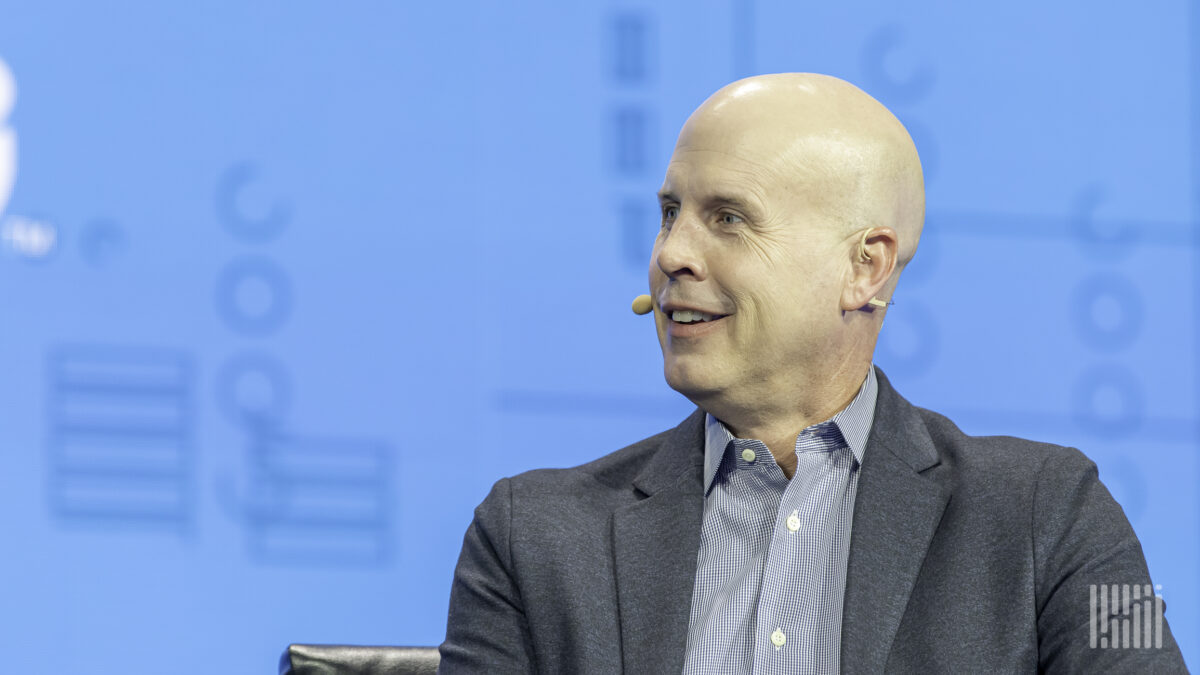This fireside chat recap is from Day 2 of FreightWaves’ The Future of Supply Chain live event in Rogers, Arkansas. For more information and content from the event, click here
FIRESIDE CHAT TOPIC: The PetSmart supply chain.
DETAILS: PetSmart operates a diverse supply chain that looks a little bit like a grocery business, with globally sourced hard goods as well as live animals.
SPEAKER: J.K. Symancyk, president and CEO of PetSmart.
BIO: Symancyk previously served as CEO of Academy Sports + Outdoors and president of Meijer. He started his career at Walmart Stores Inc., where he served in several leadership roles in both Sam’s Club and Wal-Mart International.
KEY QUOTES FROM SYMANCYK:
“We actually have fish distribution centers. We’ve got about 600,000 square feet across the U.S. where we move over 200 SKUs of live fish and have people dedicated to that, which means you have veterinary care and quarantine rooms. … It really does give a new definition to perishable. If you get it wrong, you’re jeopardizing the health and safety of pets that are in your care.”
“Our No. 1 volume item is actually crickets. We move 50 million-plus crickets a year because that’s what certain reptiles desire. So it’s definitely a little more complex than your average supply chain because it’s sophisticated on the one end where we own it stem to stern. We may direct import species of fish and run them through our distribution facilities all the way through local breeder networks that may be mom-and-pop in nature.”
“We had a supply chain that was built to manage a fairly stable volume and then we’ve grown over 40% over the last four years. So that’s hard enough on an organization. But in this environment the amount of flexibility and agility that we’re trying to find not only within our own network but with our partners creates new problems for us to solve every day. Last year alone we chased about $1 billion in unplanned demand. So you can imagine the stress that puts on planning and forecasting all the way throughout your supply chain.”











